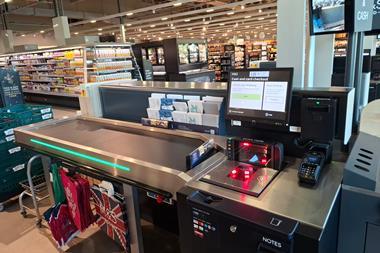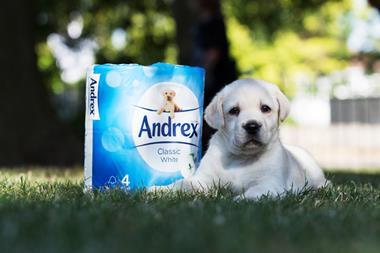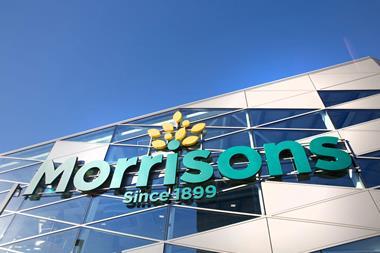Waitrose has been quick to react to Wandsworth’s rise up the demographic ladder, with the opening of its 144th store.
Until recently the postcode SW18 would not have drawn one of Britain’s most upmarket grocers to even pay a visit, let alone open a 35,000 sq ft store with the focus on fresh products that we have come to expect of Waitrose. However, as the Census (and property prices) tell us, this part of south London is on the up.
The ACORN profile shows that a remarkable 70% of the catchment of the new store fall into the ‘educated urbanites’ group which, along with its close relations the ‘prosperous professionals’ and ‘aspiring singles’ has all but driven out the last vestiges of ‘inner city adversity’ residents. As the chart reveals, no grocer can have a national market profile so closely aligned to such a small segment of the UK population, but if anyone is going to perform well among this new local market it is Waitrose. Only Marks and Spencer can come close, so it is little wonder that the John Lewis grocery arm was called in to anchor the £72m redevelopment of the Southside shopping centre.
The fresh start with Waitrose is further reflected in the renaming of the shopping centre from Wandsworth shopping centre.
The catchment of the Wandsworth store is almost as concentrated as the ACORN profile. The Thames offers a natural barrier to the north, while congested roads provide the barrier elsewhere. However, there are sufficient volumes of people in the catchment to make a viable opening for Waitrose.
With such a tight demographic group to focus on, Waitrose should have little trouble tailoring the range to the customers’ needs. This relatively strong demographic fit compared to the other local players means Waitrose should expect to perform somewhat better than CACI’s initial prediction that this store would rank just outside of the top third of the Waitrose estate.
The key loser in the catchment is Sainsbury which operates four stores in the local battleground. To prevent the loss of a potentially damaging £200k per week across these stores, Sainsbury too must focus on the demands of this upwardly mobile demographic group.
It seems remarkable to see that Tesco will not register any noticeable impacts from the new store. However, this reflects its weak supermarket presence in this part of London, with its nearest full offering being the Wimbledon Metro store, almost 2.5 miles away. This low presence is illustrated by a mere 4% share of the local catchment
However, as the recent takeover of Adminstore has revealed, Tesco is serving this part of London by a rapid growth in the number of Tesco Express stores.
Until recently the postcode SW18 would not have drawn one of Britain’s most upmarket grocers to even pay a visit, let alone open a 35,000 sq ft store with the focus on fresh products that we have come to expect of Waitrose. However, as the Census (and property prices) tell us, this part of south London is on the up.
The ACORN profile shows that a remarkable 70% of the catchment of the new store fall into the ‘educated urbanites’ group which, along with its close relations the ‘prosperous professionals’ and ‘aspiring singles’ has all but driven out the last vestiges of ‘inner city adversity’ residents. As the chart reveals, no grocer can have a national market profile so closely aligned to such a small segment of the UK population, but if anyone is going to perform well among this new local market it is Waitrose. Only Marks and Spencer can come close, so it is little wonder that the John Lewis grocery arm was called in to anchor the £72m redevelopment of the Southside shopping centre.
The fresh start with Waitrose is further reflected in the renaming of the shopping centre from Wandsworth shopping centre.
The catchment of the Wandsworth store is almost as concentrated as the ACORN profile. The Thames offers a natural barrier to the north, while congested roads provide the barrier elsewhere. However, there are sufficient volumes of people in the catchment to make a viable opening for Waitrose.
With such a tight demographic group to focus on, Waitrose should have little trouble tailoring the range to the customers’ needs. This relatively strong demographic fit compared to the other local players means Waitrose should expect to perform somewhat better than CACI’s initial prediction that this store would rank just outside of the top third of the Waitrose estate.
The key loser in the catchment is Sainsbury which operates four stores in the local battleground. To prevent the loss of a potentially damaging £200k per week across these stores, Sainsbury too must focus on the demands of this upwardly mobile demographic group.
It seems remarkable to see that Tesco will not register any noticeable impacts from the new store. However, this reflects its weak supermarket presence in this part of London, with its nearest full offering being the Wimbledon Metro store, almost 2.5 miles away. This low presence is illustrated by a mere 4% share of the local catchment
However, as the recent takeover of Adminstore has revealed, Tesco is serving this part of London by a rapid growth in the number of Tesco Express stores.



















No comments yet